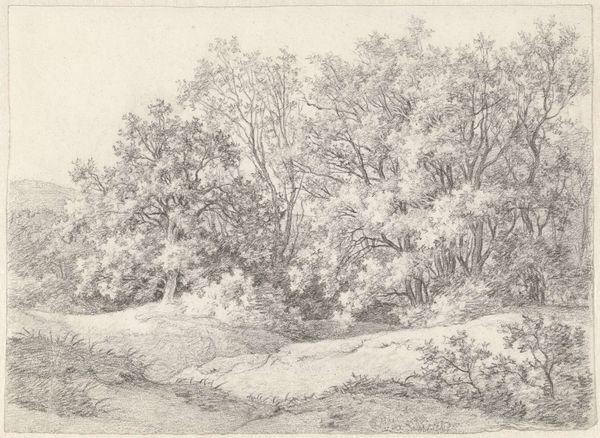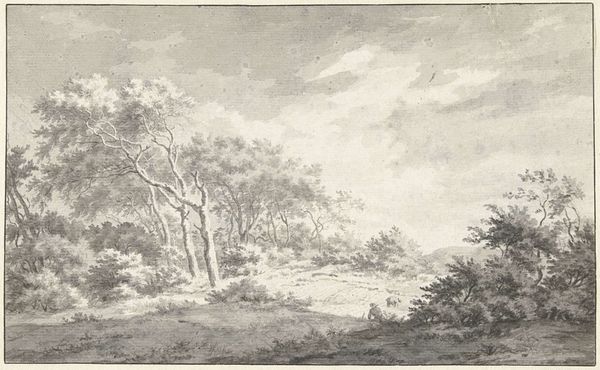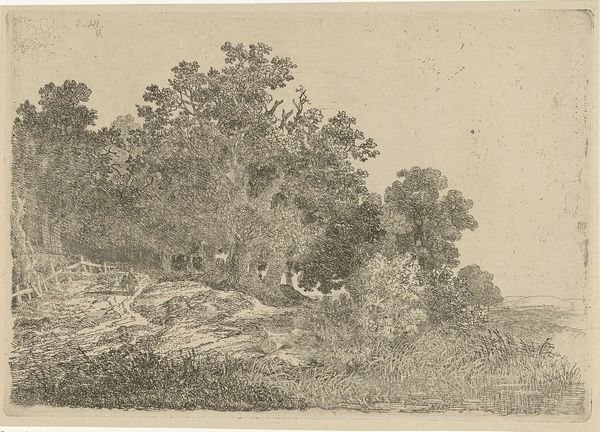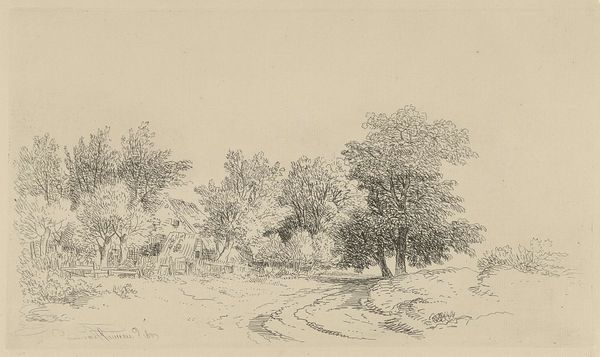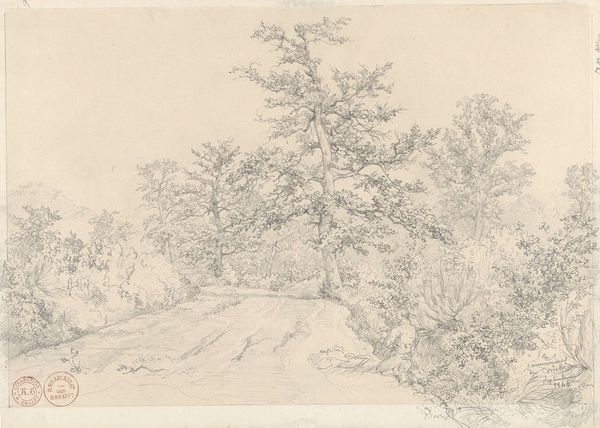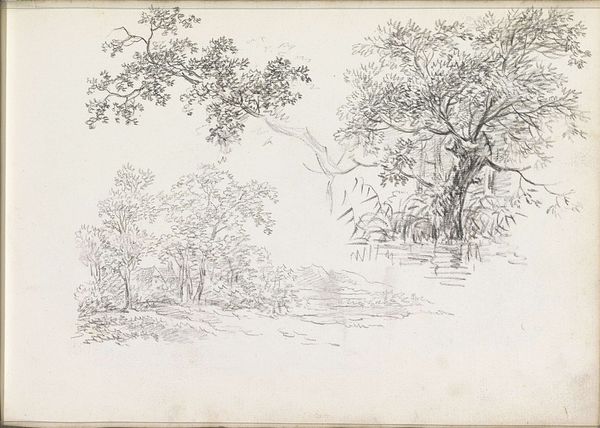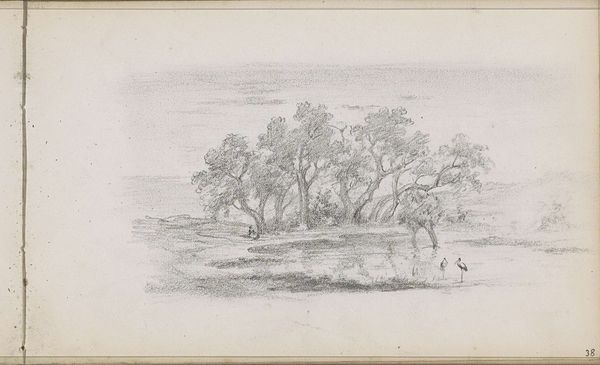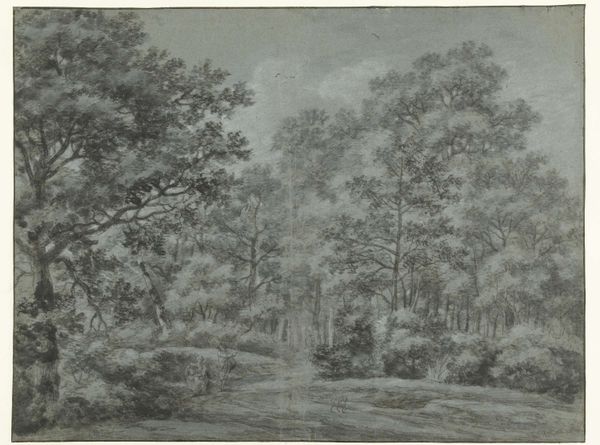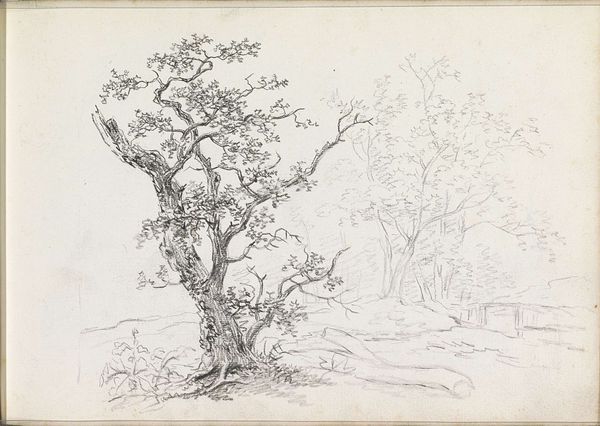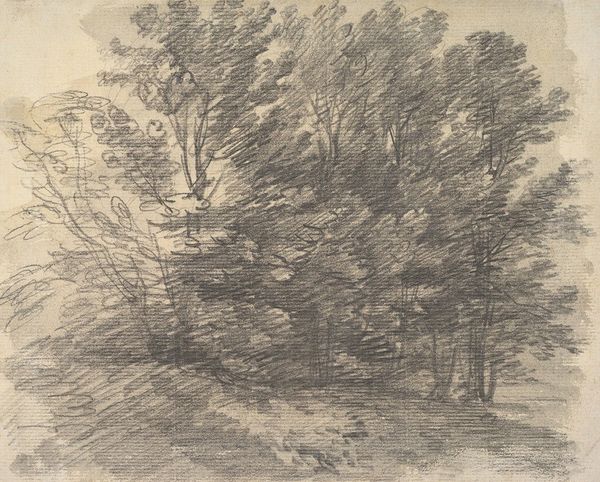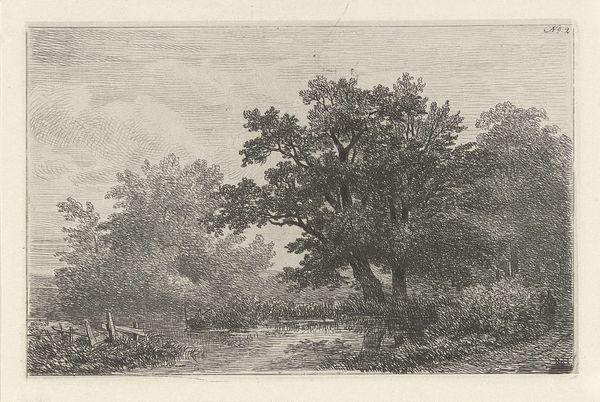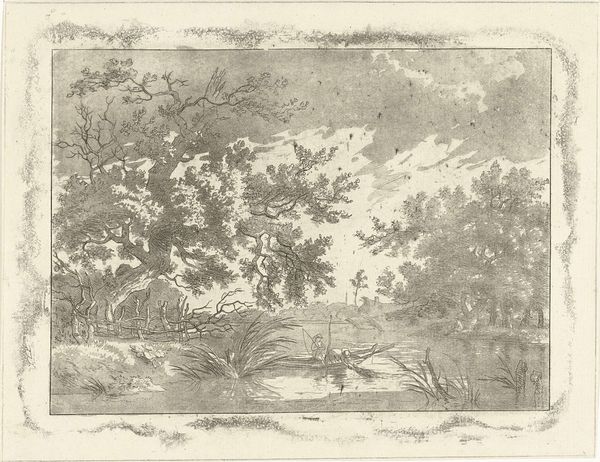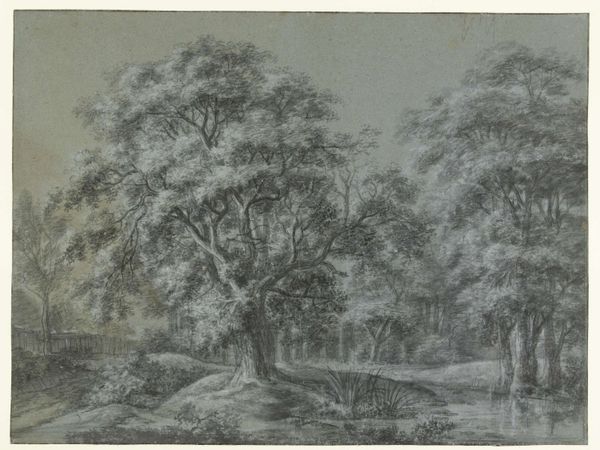
drawing, pencil
#
drawing
#
pen sketch
#
pencil sketch
#
landscape
#
etching
#
romanticism
#
pencil
#
realism
Dimensions: height 349 mm, width 450 mm
Copyright: Rijks Museum: Open Domain
Curator: Abraham Johannes Ruytenschildt’s pencil drawing, “Bosgezicht met oude eik,” or “Wooded Landscape with Old Oak” was made sometime between 1788 and 1841. It is a beautiful example of realism within romanticism. Editor: It's quite striking; almost monochromatic, evoking a serene, almost melancholy atmosphere. The detail in the trees is amazing. The soft pencil work seems to blur the forms. I wonder what this forest looks like today, considering our environmental impact on our land… Curator: That is fascinating to consider, especially regarding the tools Ruytenschildt would have used! These 18th- and 19th-century drawings typically relied on graphite pencils of varying hardness, which were produced by hand. Think about the labor involved, from mining the graphite to preparing the paper, often linen or cotton rag. This process becomes imbued in the art. Editor: And what kind of society makes space for quiet appreciation of a landscape? This was an era of intense change, of nascent industrialization beginning to redefine landscapes. What social class had the leisure and capital for artwork such as this? Curator: Exactly. This is the crux of the issue; who is empowered to capture it? What impact has that person left? Were the works he making a commissioned product to meet their consumers' desires, or were they free for him to take upon himself, unrestricted? Editor: Right. What does it mean to create a seemingly untouched vista during a time of dramatic change, one defined by massive shifts in land usage and class structure? How might he reflect the societal norms through landscape art and subject matter? Curator: Perhaps the deliberate focus on nature can be interpreted as a silent commentary on the changes, a visual resistance to industrial incursion… Maybe a longing for something before! Editor: Maybe. To me, though, it's still breathtaking in its delicate rendering of light and shadow. Thank you for walking through the labor, economy, and sociopolitical setting that went into producing something so seemingly fragile! Curator: Likewise, the layers of questions you explored that allow us to reflect on contemporary contexts have given this a completely different resonance.
Comments
No comments
Be the first to comment and join the conversation on the ultimate creative platform.
